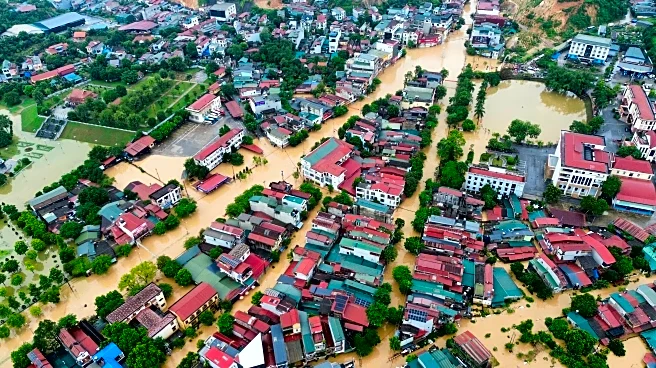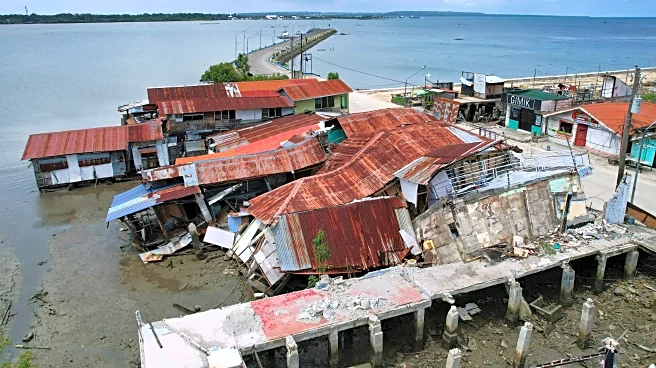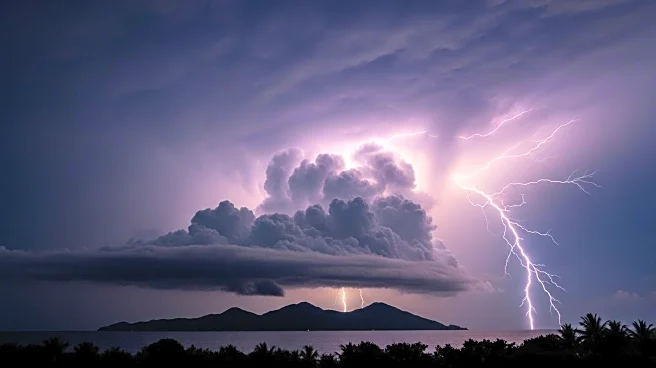What is the story about?
What's Happening?
Typhoon Matmo, also known locally as Paolo, has intensified as it made landfall in the northern Philippines. The storm is bringing maximum sustained winds of 130 kilometers per hour and is expected to cause heavy rainfall, particularly in the provinces of Isabela, Aurora, and Quirino. The national weather agency, Pagasa, has issued warnings of severe flooding and landslides. In response, government work and schools have been suspended in affected areas, and several domestic flights have been canceled. After crossing Luzon, the typhoon is projected to move into the South China Sea, where it is expected to strengthen further before making landfall in southern China.
Why It's Important?
The intensification of Typhoon Matmo poses significant risks to both the Philippines and China, regions already vulnerable to severe weather events. The Philippines, which experiences around 20 cyclones annually, is still recovering from the impact of two recent deadly typhoons. The potential for severe flooding and landslides could exacerbate existing challenges, affecting infrastructure, agriculture, and local communities. In China, the typhoon threatens major agricultural areas, with the potential for significant damage to crops, particularly in sugar-producing regions. The economic and humanitarian impacts could be substantial, necessitating coordinated disaster response efforts.
What's Next?
As Typhoon Matmo progresses, it is expected to strengthen into a severe typhoon with winds equivalent to a Category 1 hurricane. The storm is forecasted to make a second landfall in China's Leizhou peninsula, with heavy rains anticipated in parts of Hainan Island and coastal areas of Guangxi, Yunnan, and Guangdong provinces. Authorities in both the Philippines and China are likely to continue monitoring the storm closely, implementing emergency measures to mitigate damage and ensure public safety. The situation remains dynamic, with potential for further developments as the storm evolves.
Beyond the Headlines
The recurring nature of such severe weather events highlights the broader challenges posed by climate change, which is believed to be intensifying the frequency and severity of storms in the region. This underscores the need for enhanced disaster preparedness and climate resilience strategies in vulnerable areas. The impact on agriculture also raises concerns about food security and economic stability in affected regions, prompting discussions on sustainable agricultural practices and infrastructure improvements.
AI Generated Content
Do you find this article useful?
















